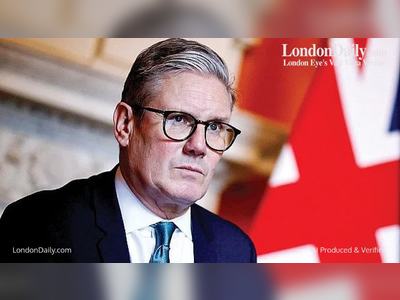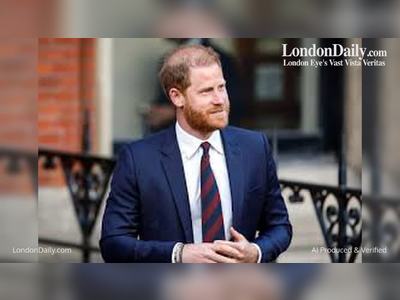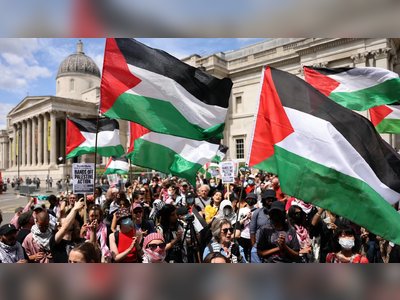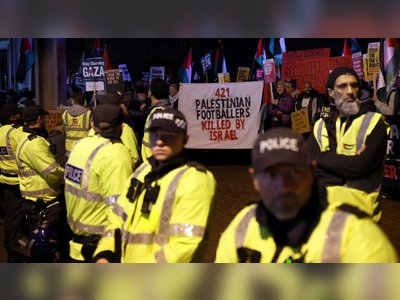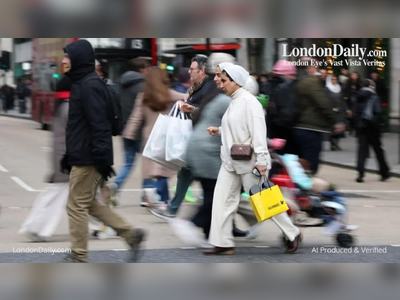
Poorest areas bear brunt of air pollution, US study shows
Evidence suggests least well-off and minority ethnic communities face biggest burden from toxic air
It has long been known that the poorest and those from minority ethnic communities shoulder the greatest burden from air pollution – and now a study has provided compelling evidence.
Researchers used sensors mounted on satellites and aircraft to map nitrogen dioxide across 11 major US cities. Clouds and snow on the ground prevented measurement on many days but the researchers were able to map the pollution exposure well enough to compare with census data.
The poorest areas in New York and Newark – defined as those with more than one-fifth of households below the poverty level – had air pollution about 26% greater than wealthier areas.
In Los Angeles, black, Hispanic and Asian communities of the lowest socioeconomic status endured average pollution that was 38% greater than their non-Hispanic, white counterparts – the greatest difference of any of the cities studied.
Prof Sally Pusede from the University of Virginia, who led the study with the researcher Isabella Dressel, said: “We find daily observations from space describe a major portion of nitrogen dioxide inequalities, despite their reduced spatial detail. This opens new opportunities to observe how nitrogen dioxide inequalities co-vary with other environmental harms.”
Despite the UK government’s levelling up agenda, there is no detailed data on air pollution and inequalities for British cities, but earlier research points to similar problems to those found in the US. Analysis of data from the early 2000s showed that ethnically diverse and the poorest areas of England had the most air pollution.
Research using data from 2001 to 2011 showed that areas with poorer households and those with the highest proportion of children had the greatest traffic pollution. People in the poorest areas contributed least to the problems they experienced.
Poor households emitted the least air pollution compared with those in the wealthiest areas. They also owned fewer cars and produced less pollution per kilometre driven. The gap between air pollution in the wealthiest and poorest areas grew in the first decade of the century.
In addition to air pollution, people in poorer areas are likely to be living with many inequalities and vulnerabilities, such as bad housing and long-term illness, as well as bearing the brunt of the cost of living crisis.
Brian Castellani, a professor of sociology at the University of Durham, who was not part of the studies, said: “People living in poor urban areas don’t generate the majority of air pollution from which they suffer.
“Instead of always trying to change habits or behaviours, we need to address how the places in which people live create the inequalities and vulnerability they experience. We need to fix the systems that create these problems in the first place.”
Researchers used sensors mounted on satellites and aircraft to map nitrogen dioxide across 11 major US cities. Clouds and snow on the ground prevented measurement on many days but the researchers were able to map the pollution exposure well enough to compare with census data.
The poorest areas in New York and Newark – defined as those with more than one-fifth of households below the poverty level – had air pollution about 26% greater than wealthier areas.
In Los Angeles, black, Hispanic and Asian communities of the lowest socioeconomic status endured average pollution that was 38% greater than their non-Hispanic, white counterparts – the greatest difference of any of the cities studied.
Prof Sally Pusede from the University of Virginia, who led the study with the researcher Isabella Dressel, said: “We find daily observations from space describe a major portion of nitrogen dioxide inequalities, despite their reduced spatial detail. This opens new opportunities to observe how nitrogen dioxide inequalities co-vary with other environmental harms.”
Despite the UK government’s levelling up agenda, there is no detailed data on air pollution and inequalities for British cities, but earlier research points to similar problems to those found in the US. Analysis of data from the early 2000s showed that ethnically diverse and the poorest areas of England had the most air pollution.
Research using data from 2001 to 2011 showed that areas with poorer households and those with the highest proportion of children had the greatest traffic pollution. People in the poorest areas contributed least to the problems they experienced.
Poor households emitted the least air pollution compared with those in the wealthiest areas. They also owned fewer cars and produced less pollution per kilometre driven. The gap between air pollution in the wealthiest and poorest areas grew in the first decade of the century.
In addition to air pollution, people in poorer areas are likely to be living with many inequalities and vulnerabilities, such as bad housing and long-term illness, as well as bearing the brunt of the cost of living crisis.
Brian Castellani, a professor of sociology at the University of Durham, who was not part of the studies, said: “People living in poor urban areas don’t generate the majority of air pollution from which they suffer.
“Instead of always trying to change habits or behaviours, we need to address how the places in which people live create the inequalities and vulnerability they experience. We need to fix the systems that create these problems in the first place.”

